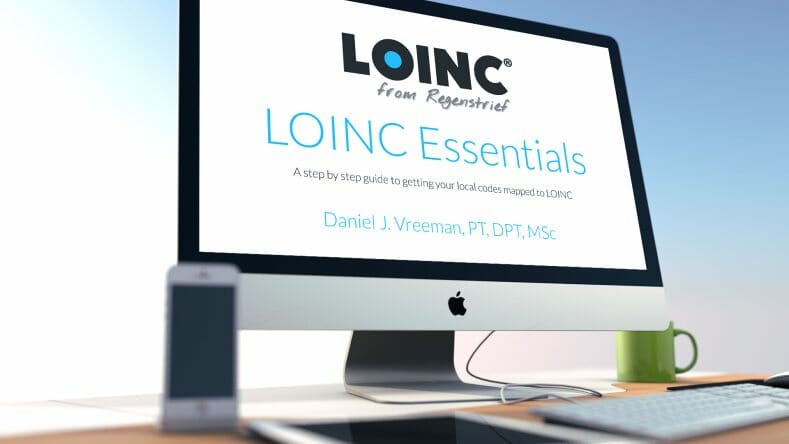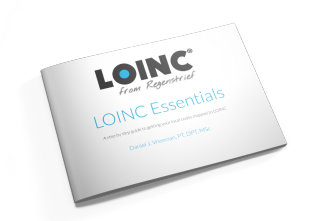LOINC Essentials
A step-by-step guide for getting your local codes mapped to LOINCA step-by-step guide for getting your local codes mapped to LOINC
There are lots of reasons why people want to learn about LOINC. Maybe your organization has decided it will map its local test codes to LOINC for external data exchange. Perhaps you’re an analyst crunching numbers on aggregate data. Or maybe you’re a vendor looking to make your information technology product or mobile health app interoperable with other platforms. LOINC is now ubiquitous in health data systems worldwide, so you’re in good company.
I’ll admit, LOINC can be a little enigmatic at first blush. The term attributes aren’t exactly self-explanatory. Many term names look similar at first. Plus, there are so many of them! Seriously, there are hundreds of glucose terms. Pro Tip: You can ignore most of them! Mapping a large test catalog to LOINC can be a daunting task and it’s hard to know where to begin. You might have downloaded RELMA and thought to yourself “OK, now what?”
Well, that’s why I created this guide.
This guide is unique because it will show you how to hit the ground running.
I’ve used my many years of experience leading the LOINC project and the terminology services of the largest health information exchange in the USA to curate and synthesize these comprehensive resources into the key essentials.
This book cover the basics of LOINC to help you pick out the differences between LOINC terms with subtle but important distinctions. We go step-by-step through the process of getting your local observation codes into the RELMA program and how to use it’s most helpful features. I’ll describe some best practices in LOINC mapping, and how to set yourself up for success in the long run.
My goal is to take you from newbie LOINCer to LOINCer extraordinaire (and even show some expert LOINCers a trick or two).
Learn LOINC Fast
Get the secret weapon that will jumpstart your LOINC mapping and make you a LOINCer extraordinaire in no time
$4.99
See what’s inside
Table of Contents
Chapter 1 – An overview of LOINC
- What LOINC is
- A word on nomenclature
- LOINC in data exchange
- Grown in Indiana, but now serving a growing global community
- Scope of LOINC
- An open development model
Chapter 2 – Get your plan together
- High level approach for mapping your local codes to LOINC codes
Chapter 3 – Human resources and expertise
- Central versus peripheral strategies for mapping
- Mapping project team member roles
- Long term view for maintenance
Chapter 4 – Setup your tools
- Tools you’ll need to get started
- Create your source file(s) for mapping
- Getting your local test catalog loaded into RELMA
- Translating your idiosyncratic abbreviations into words RELMA understands
Chapter 5 – How to locate the right LOINC code
- The LOINC term name is key
- Gross anatomy of a LOINC term name
- The LOINC axes under the microscope
- Types of LOINC Names
- The LOINC Essentials Framework
- Putting the framework to use
- Trust, but verify
- Digging Deeper into the LOINC Property
- Putting our Property prowess to work
- LOINC System and the unfortunate XXX conundrum
- What’s ordered vs. What’s measured
- There might not be an equivalent term in LOINC (yet)
Chapter 6 – Optimizing the mapping process with RELMA
- Optimizing our Working Set
- Setting user preferences
- Setting search limits
- The Mapping screen
- RELMA’s key functions for mapping
- Become a search syntax ninja
- Review additional LOINC term attributes
- Language Translations
Chapter 7 – Mapping local panels to LOINC panels
- LOINC panels
- Defining a panel
- Rules for matching local panels to LOINC panels
Chapter 8 – Sweet. You’re LOINCed. Now what?
- Export your mappings
- Check your work
- Get a validity check on your mappings from Regenstrief
- Let others benefit from your hard work
- Using LOINC names in HL7 messages
- Staying up to date
Chapter 9 – Help LOINC grow
- Requesting new LOINC codes from Regenstrief
- Keep LOINC free!
Next Steps

About the author
Dr. Daniel Vreeman is a physical therapist, biomedical informatician, and expert in health data standards. His work aims to create a global health ecosystem where data is available with open standards that unlock the potential for information systems and applications to improve health decision-making and care. Dr. Vreeman is the Chief Standards Development Officer at HL7 International where he leads the development of standards like FHIR® that are advancing health data interoperability and enabling new digital freedoms around the world. He also serves as Chair of Board of Directors for the HL7 FHIR Foundation.
Dr. Vreeman is an interoperability expert who has developed internationally adopted health data standards, implemented them in multi-institutional health IT systems, evaluated their use, and provided strategic advice to interoperability initiatives of numerous U.S. federal agencies and national eHealth efforts in several other countries. He previously served as the Senior Clinical Data Standards Lead at RTI International. From 2006 to 2019, Dr. Vreeman was the Director, LOINC and Health Data Standards with the Regenstrief Institute, Inc. and the inaugural Regenstrief–McDonald Scholar in Data Standards at the Indiana University School of Medicine. In those roles, he led the development of LOINC, an open vocabulary standard for health measurements, observations and documents that is now used in more than 185 countries.
Dr. Vreeman’s leadership on health data standards is globally recognized. He has published numerous scientific papers, guides and articles, and has presented over 275 invited lectures worldwide. He is the author of the book LOINC Essentials: A step-by-step guide for getting your local codes mapped to LOINC. His innovative work has been recognized through notable awards, including being elected as fellow of the American College of Medical Informatics, fellow of the International Academy of Health Sciences Informatics, and a John Quinn HL7 Fellow. He has received the Distinguished Alumni Award from the Duke University Doctor of Physical Therapy Program, the Technology and Innovation Award from the American Physical Therapy Association Health Policy and Administration Section, and the LOINC Award for Distinguished Contributions from the Regenstrief Institute. He has also been recognized with an honorary LOINC code 101000-8 for his lasting legacy as a perennial advocate of health data standards.
Dr. Vreeman earned a Bachelor of Arts in Biological Sciences from Cornell University, and a Doctor of Physical Therapy (DPT) from Duke University. He also completed a two year NLM-sponsored Medical Informatics Research Fellowship at the Regenstrief Institute, Inc, which is associated with the Indiana University School of Medicine. While an informatics fellow, he earned a MS in Clinical Research with an emphasis on medical informatics, through the NIH-funded Clinical Investigator Training Enhancement (CITE) program.
Throughout his career Dr. Vreeman has taught biomedical informatics in academic settings and many other forums. Early in his career at Indiana University he taught P645 Evidence-based Critical Inquiry II and co-instructed P513 – Functional Anatomy and Clinical Biomechanics. He has worked as a generalist physical therapist on the inpatient wards at two level I trauma center hospitals in Indianapolis.


